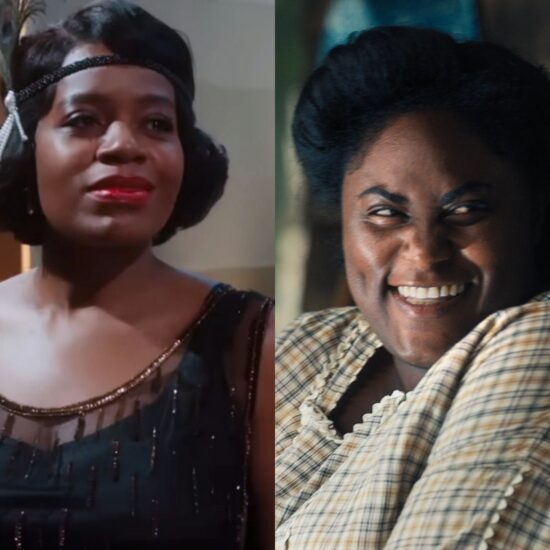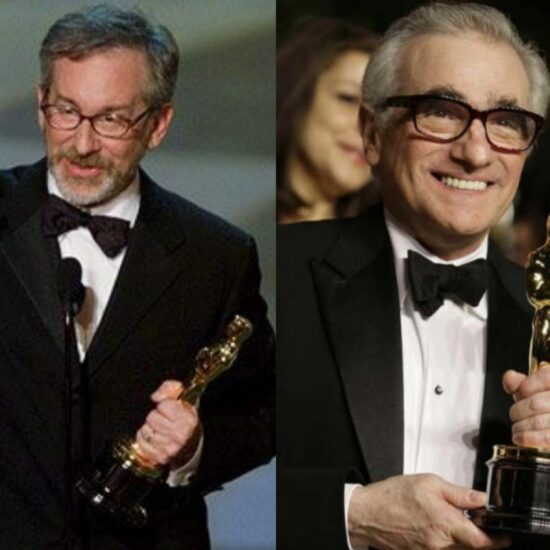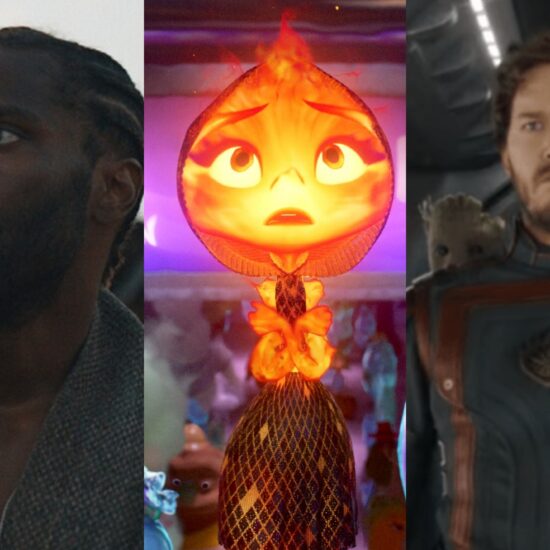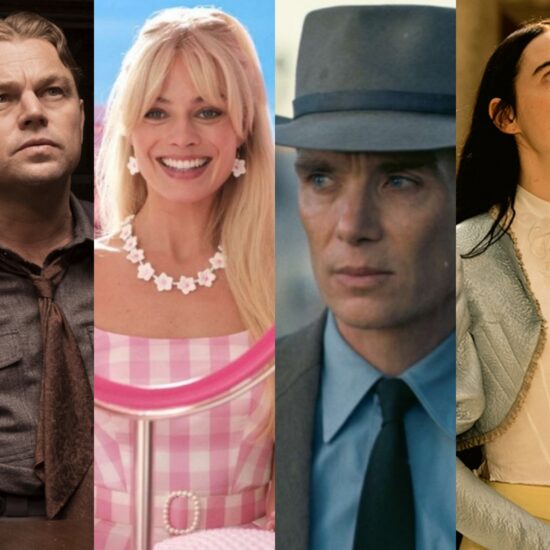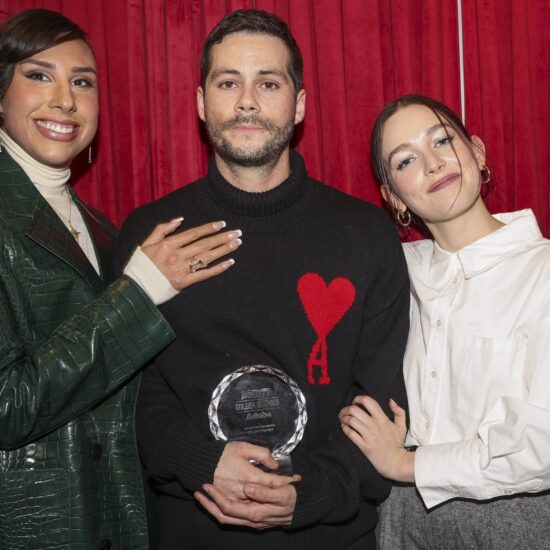
In early 1991, 20-year-old Tupac Shakur was torn between ambitions of acting and rapping, and struggling to catch a break on both fronts. He had studied theater at the Baltimore School for the Arts and toured with the west coast hip-hop collective Digital Underground, but acting opportunities were scarce and he had yet to finish the demo tape that would launch him to stardom. His luck would turn when Digital Underground’s road manager, Sleuth, received a call from Cara Lewis, the group’s booking agent at William Morris. A film director named Ernest Dickerson was looking for actors for a movie called Juice and they invited Money-B, a fellow member of the collective, to audition. Dickerson had earned acclaim for his work as Spike Lee’s director of photography on a run of films, including She’s Gotta Have It, School Daze, Do the Right Thing, Mo’ Better Blues, and Jungle Fever. Now he was writing and directing his first feature film, a portrait of inner-city life and a coming-of-age drama about four teenage boys growing up in Harlem.
While Tupac and members from Digital Underground rolled through the streets of New York in a limousine, attending New York’s New Music Seminar and doing various press junkets, Money-B read through the script. He scanned the lines that were written for Steel, the part he was slated to audition for, but as he read, one of the other characters caught his attention. Money passed Tupac the script. “Look at the character Bishop. This dude is just like you,” he told Tupac. “You should just come to the audition and read for this other part here.”
This article is adapted from Tupac Shakur: The Authorized Biography, by Staci Robinson (Crown).
Crown Publishing Group
Tupac’s friend Treach (from Naughty By Nature), whom he had just met on the road months before, had been recommended to the casting agents by Queen Latifah, who would also be cast in the film. The next day, Money, Treach, and Tupac strolled into the William Morris Agency. Only Money and Treach had an official audition. They sat patiently and waited alongside the actors gathered to read for the various parts. “In our minds, if it all worked out, I’d have been Steel, Tupac would have been Bishop,” Money-B recalled. “Treach would have been Q. We would have been real friends being friends in the movie, which would have been dope.”
Money-B went in first and got a quick thanks-but-no-thanks. Treach auditioned next, and although he didn’t snag one of the leads, he did end up cast in a smaller role. Dickerson then spotted Tupac in the waiting area and asked him if he wanted to audition. A few moments later, Tupac found himself in a room filled with casting agents and producers reading for the role of Q.
“What’s your name?” they asked him.
“Tupac.”
“Oh, that’s an interesting name. What is that?”
Tupac proudly explained that he was named after Tupac Amaru the last Sapa Inca of the Neo-Inca State, the final remaining independent part of the Inca empire.
As soon as he was finished reading for Q, Dickerson had an idea. “Can you stay longer? Can you read for this role?” Dickerson asked while handing him sides — short snippets of dialogue to study. It was dialogue for Bishop, the character that had reminded Money of Tupac. Tupac nodded, glanced at the paper, and stepped outside to study for a bit.
When he’d prepared himself, he went back in and stood in front of Dickerson and the rest of the filmmakers who held the fate of his dreams in their hands. “I read cold turkey, walked in there, picked up the sides and just read,” he remembered later. “And I got that part. That was God.”
“Tupac goes in the room,” Money remembered. “All of a sudden you hear cheering. And people standing up and whistling and everything.”
Dickerson and the others exchanged glances as Tupac left the room. They knew they’d found their Bishop. “The thing that he got that nobody else got was the pain,” Dickerson recalled.
Producer David Heyman, who would go on to produce the Harry Potter films, was there and remembered that after the audition, “[Tupac] walked out of the room and he stuck his head back in and with a little wink and a smile, because he was mischievous, he says, ‘You better give me the part because I know where y’all live,’ and then he shut the door and walked out.”
The film’s producers invited the four potential leads to dinner together to see if they had chemistry. At the table with Tupac that evening were Jermaine Hopkins, who had appeared in the classic Lean on Me and was being considered for the role of Steel; Omar Epps, a student of LaGuardia High School of Music & Art and Performing Arts who would be cast as Q; and Khalil Kain, who had been an extra in New Jack City and had auditioned for the role of Raheem. By the end of the dinner, the producers were sold on the four young men’s rapport. It was the perfect combination.
While Tupac waited for an official confirmation that he’d been cast in Juice, his manager, Atron Gregory, continued to circulate his demo to record labels in New York and in Los Angeles. As the list of rejections continued to grow, Atron received some hopeful news. “Jeff Fenster of Charisma Records was the only man in the industry who got Tupac [at that point],” he said. But the hope was quickly dashed. Fenster could not convince Charisma’s execs to make an offer.
Amid these rejections, Ernest Dickerson came through with a resounding yes — Tupac had officially landed the role in Juice. In a full-circle moment, Juice would shoot in his hometown of Harlem, just a short distance from the Apollo Theater, where six years earlier Tupac had gotten his first bite from the acting bug in A Raisin in the Sun. At a time when theater screens across the country were filling up with cinematic portrayals of life in the hood — especially that year, as films such as New Jack City and Boyz n the Hood opened to mammoth success, Juice seemed poised to break out.
Production began on March 14, 1991, less than two weeks after motorist Rodney King was beaten violently by four Los Angeles Police Department officers following a high-speed pursuit. The beating, captured on video and repeated endlessly across all news platforms, marked a watershed moment in race relations in America. Many Black Americans were ready to revolt against the racist oppression behind this reprehensible act. Tupac, angered as well, and sick and tired of the police continuing to misuse their power, wanted nothing more than to see these officers charged, hoping the world would finally start to see some change. But things would get worse in Los Angeles before they got better: Two days after filming started, Black teenager Latasha Harlins, a Westchester High School student, was shot by a Korean grocer over a $1.79 bottle of orange juice. Harlins had placed the bottle of juice in her backpack as she approached the register, two dollar bills in her hand, with the intention to pay. The city was a powder keg, ready to explode.
A coast away, Tupac settled in and prepared for his debut movie role. The film’s producers rented him an apartment on the ninth floor of a building at Fifty-First Street and Seventh Avenue for the duration of the shoot. The pad soon became a hangout spot for some of his castmates, as well as a place to reconvene with friends he had met on tour, like Yo-Yo.
At first, Tupac’s daily trips to the set went without a hitch. He showed up on time, for the most part, except a few early mornings when he disregarded the call sheet and kept the entire crew waiting. Cast members recalled conversations about this behavior, but Tupac shrugged it off. “Pac would get mad and walk off the set,” Jermaine Hopkins recalled. Hopkins said that Tupac would tell his castmates, “They need us more than we need them. Do you know how much money it would cost to replace one of us right now and have to do this shit all over again?”
More often, though, Tupac left the selfish behavior at home and showed up to the set congenial and accommodating. The production shot outside most days, and many of the cast and crew noticed Tupac’s natural propensity to engage with lookie-loos and homeless people. Bothered by periodic homelessness since he was young, he didn’t hesitate to check on their well-being, talking with them and doing what he could to offer them words of encouragement. Some days he even made friends with passing fans as they walked by the set.
Social as he could be, when it came to acting, Tupac was focused. He dove deep into the role of Bishop, the film’s antagonist, a character with a checkered past who harbored deep pain from a severely dysfunctional family life. His training from BSA and his short stint in Tam High’s drama department shone through as producers watched the dailies. One of them, Preston Holmes, remembered how his initial skepticism melted away: “I was more than a little surprised, to put it mildly, that Tupac was so serious about the craft of acting. I guess I assumed this guy was just a rapper that they were sticking in this movie because he sold a few records and the headache of dealing with this on a day-to-day basis would be ours to deal with, but the truth was that this guy was a consummate pro. He was superb. He blew all of us away.”
Tupac found a way to infuse his own life experiences into his thunderous performance, tapping into his deep reserves of anger. Tupac later explained his process: “When I get a part, first I just try to find out, you know, how does this character feel? Like I make the person up in my mind, what does he look like? Try to put a face to him, even though it’s my face. I give him a walk. Give him an attitude. All you really have to do is relate to the character.” In another interview, he recalled, “I am real . . . I stay real, I am never a story, never a script, never a character. Even when I’m playing a character, I am really that character. There is nothing fake. I just took everything and internalized it.”
Tupac also tried to tap into what he believed to be the sentiments of many young Black men in America at that time. “You have to understand that character. He came from a broken home,” he explained of Bishop in an interview. “No models, no role models, no real models. Nobody sat him down. All he did was eat breakfast at home and go in the street and get all of his education.” In another interview, he said that Juice was “the story of today’s young Black male and it needs to be told because police beating up brothers in the street. All that stuff still happens. And all this needs to be told.” Speaking from Bishop’s point of view, he explained, “I have no role models. That’s why I went over the edge.” At the height of Bishop’s dramatic arc, he delivers the classic sinister lines: “I am crazy, but you know what else? I don’t give a fuck! . . . I don’t give a fuck about myself.” Those lines captured the hopelessness that sometimes suffused not only Tupac’s soul but the souls of so many across the country.
Tupac’s portrayal of Bishop was so convincing that it would eventually blur the lines for some of the film’s viewers, who collapsed the aggressive qualities of the character onto the actor. But the interplay was far more complex. Tupac’s castmate Jermaine Hopkins spoke about Tupac’s role as Bishop: “Was Tupac Bishop? No. Was Bishop’s attitude inside of Tupac? Yes. Were there certain situations that could bring the Bishop out of Tupac? Yes. Bishop was a character on a piece of paper. The personality of a Tupac Shakur in lifestyle and upbringing and trials and tribulations through life brought Bishop to life as a character. Those words on the script is just words on a script without putting any feeling behind him.”
The production of Juice was not without drama. Tupac’s movie trailer — his private space to get dressed and relax between scenes — was an active hangout, with friends and castmates coming and going, weed smoke wafting through the air inside the small space. According to his family, Tupac never liked to be alone and often surrounded himself with friends and family. Sometimes he even welcomed curious movie fans and passersby onto the set. But one afternoon his friendliness cost him. A few hours after inviting a stranger onto the set, Tupac realized that all of his gold jewelry was gone.
Tupac went off the rails at this violation of one of his mother Afeni’s cardinal rules: Never steal from another. Ernest Dickerson tried to calm him down by assuring him that they’d reimburse him for everything that was taken, but Tupac told him he would take care of it. Days later, someone spotted the suspect lurking around the perimeter of the set. Tupac and his friends ran toward him, grabbed him, and beat him up in the middle of the street before he finally was able to escape and run away.
After the incident, Tupac felt he needed a protector, a watchful eye. He called on a friend who had quickly become an integral part of his life. Randy “Stretch” Walker was a fellow rap artist and producer. He and his brother, Majesty, were recording artists signed to Tommy Boy Records, performing under the name Live Squad. Stretch and Tupac had hit it off instantly when they met in Oakland and discovered their common love for rhyming about the realities of the streets. In Stretch, Tupac found a friend whose lyrics came from the same foundation as his own: the ills of crime-ridden urban communities and how they adversely affected the psyche of young Black children.
The two soon became inseparable. “Everywhere they went, they had to go together,” Shock recalled. “They loved each other so much, they were crazy. They would stand in the living room kickin’ each other with their arms locked. One faced one way and the other faced the other way. We’d watch for a minute and then we’d get back to playing dominoes. It would go on for twenty minutes straight.” Stretch had already been hanging out occasionally on the set of Juice. Now Tupac asked him to help ensure no one else came into his trailer for the remainder of the shoot. Stretch took the responsibility seriously. Once he and his six-foot-seven presence started to show up every morning, everyone was sure that no one else would be stealing from Tupac.
On set, Tupac spent his downtime reading the daily newspapers. One morning, he came across a story about a young mother who had thrown her newborn baby boy down a trash chute. He followed the story closely as the week went on, shaken by the details. He read that the girl was only twelve years old, and that the pregnancy was the result of her cousin raping her. Tupac was not only discouraged that the story didn’t get front-page placement, but he couldn’t understand how anyone who heard or read about it didn’t stop to acknowledge the gravity of this horrific tragedy. The incest, the baby thrown in the trash — it was all too much for him to forget. He talked about it with castmates and crew throughout the day, and eventually grabbed one of his notebooks and began scribbling lyrics. “Pac was so troubled, like, the whole morning,” his Juice co-star Omar Epps remembered. “Like, how could a woman do that? And so a few hours later he was like ‘Yo, O, come here. He starts kickin’ his rhyme.”
The song was “Brenda’s Got a Baby.” “It was in my trailer while we was filming Juice,” Tupac recalled. “In between shots I wrote it. I was crying too. That’s how I knew everybody else would cry, ’cause I was crying. It takes a lot to move me. But I was in tears because this little Black girl was all by herself and the next page I’m hearing about little debutantes and shit. That shit was just getting to me too much.” Production for Juice wrapped mid-April. On the last day on set, the cast and crew gathered in celebration, hopeful about the film’s future on the big screen. Still waiting on a record deal, Tupac would head back to California to continue to record. As he left the set, one of the film’s producers, Neal Moritz, congratulated him for his performance and teased him about spending so much of his money on gold chains and rings. Tupac quoted a few lines from his favorite Robert Frost poem: “So dawn goes down to day. Nothing gold can stay.”
Moritz reassured him that he was going to be a big star in ten years. But Tupac, who had no illusions about the harrowing homicide statistics that plagued America’s young Black men, had already formed his own grim self-fulfilling prophecy.
“I’m not going to be alive,” Tupac responded.
Adapted from the book TUPAC SHAKUR: The Authorized Biography by Staci Robinson. Copyright © 2023 by Amaru Entertainment, Inc.. Published in the United States by Crown, an imprint of Crown Publishing Group, a division of Penguin Random House LLC. All rights reserved.










